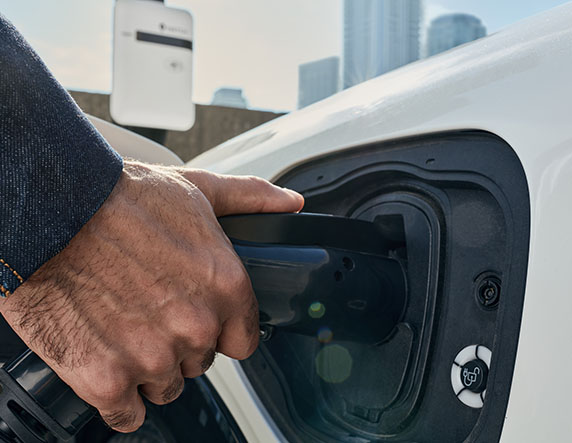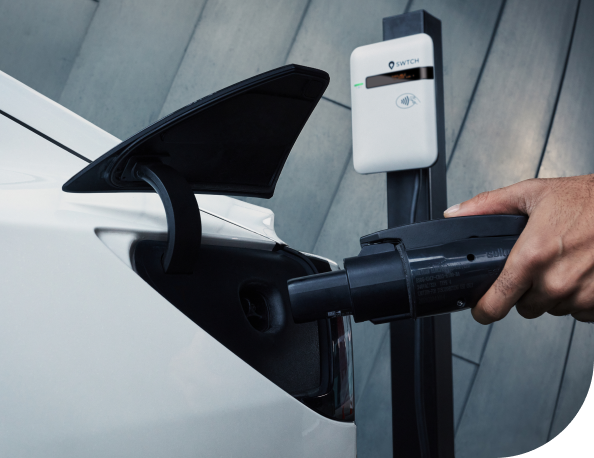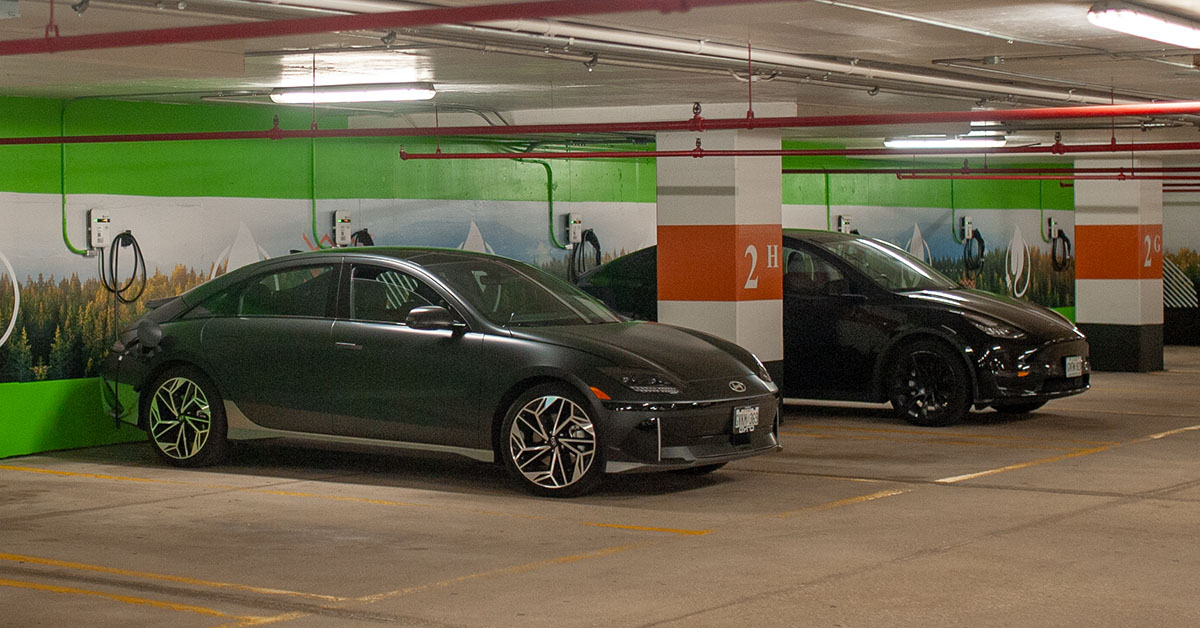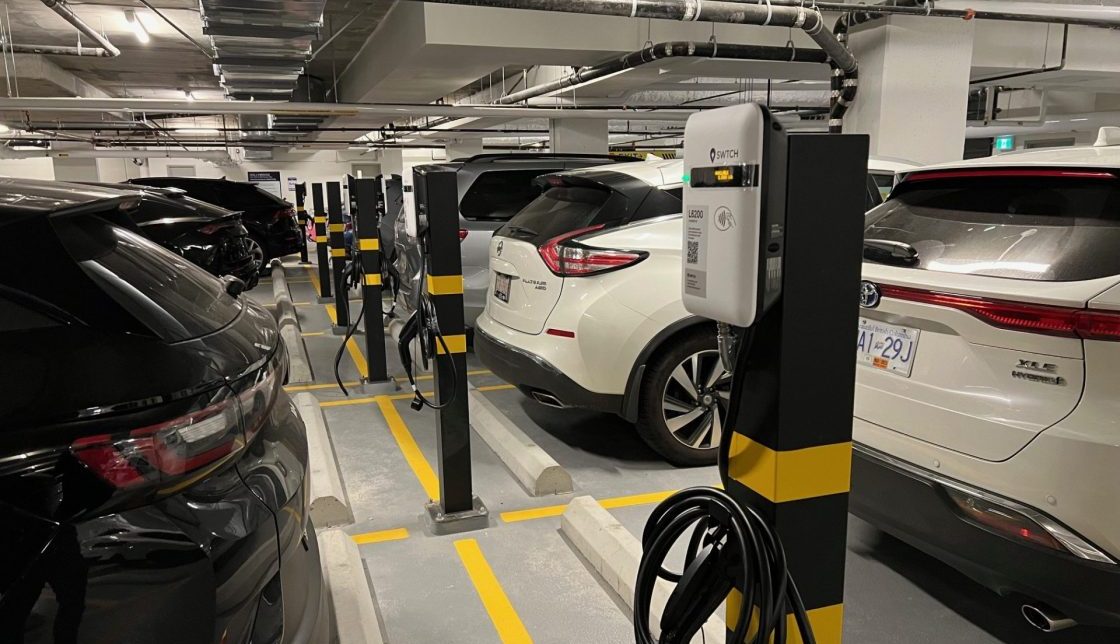Multifamily EV charging made simple: attract residents & future-proof your property
We’re rapidly approaching the time when the majority of vehicles sold will be electric.
According to BCG, the number should hit at least 49% by 2030. Regulations may see EVs’ proportion of new car sales by 2032 hit as high as 67%.
And EV drivers prefer to charge up at home. The US Department of Energy says that’s true for at least 80% of EV drivers today.
With about 31% of Americans living in multifamily homes, this means there’s both a need and a significant opportunity for more EV chargers to be installed at condo developments and apartment buildings to serve the growing needs of EV drivers.
For properties that do invest in adding chargers, there are substantial benefits to be had—and the sooner, the better.
Curious about the possibilities? Read on to understand the full picture of why and how to install EV charging at multifamily properties today.
Why you should add EV Charging to Your Multifamily Property
Adding EV charging to a multifamily property can be a big project, but there are big benefits that can come from it, both short-term and long-term.
EV charging stations can help attract and retain residents
Over the next few years, electric vehicles will become less expensive and more widespread, and more drivers—including your tenants—will begin to seek them out. They’re also going to start wanting to charge their cars at home, and are likely to choose to live at a property that offers charging.
Today, because there are relatively few multifamily properties that have onsite EV charging infrastructure, it’s easy to set your property apart by adding charging. Soon, though, multifamily properties without EV chargers will be at a major competitive disadvantage.

Onsite EV charging can highlight a commitment to sustainability
A commitment to sustainability has become an important consideration for more people when evaluating where to live. In its Voice of the Resident Report, MRI Software shows that more than 60% of renters consider technology and management practices that encourage sustainable living to be either “Important” or “Absolutely essential.”
There are many kinds of initiatives that can go into meeting this new demand. Common steps include updating lighting, improving insulation or installing more efficient heating and cooling technology.
But EV chargers are a prominent addition to the mix and one that can highlight a determination to be sustainable beyond the norm.
EV charging is the rare amenity that pays for itself
Unlike most amenities you’ve added or are considering adding to your building, EV chargers can recoup their cost over time.
We describe payments and billing in more detail here, but here are the basics: A good multifamily EV charging setup will involve directly billing users for their charging sessions. By adding a small fee on top of the cost of electricity, you can make up the cost of your chargers and charging software over time without upsetting your tenants.
This is not something you’re likely to be able to do with other popular amenities—in-building fitness centres, for instance.
Onsite chargers may increase your building’s potential sale value
Here’s something not enough property owners are considering today: the current incentive programs that drive down the cost of installing EV chargers are not going to be around forever.
This means two things.
First, there’s no better time than the present to start installing chargers because when the incentives go away, this kind of upgrade is going to become substantially more expensive.
Second, when chargers are more expensive to install in the future, their existence on a multifamily property will become even more valuable than it is today.
Whether you’re looking to sell in the future or not, a more valuable asset is a more valuable asset. Installing EV chargers at a multifamily property today is an investment that can pay off down the road.
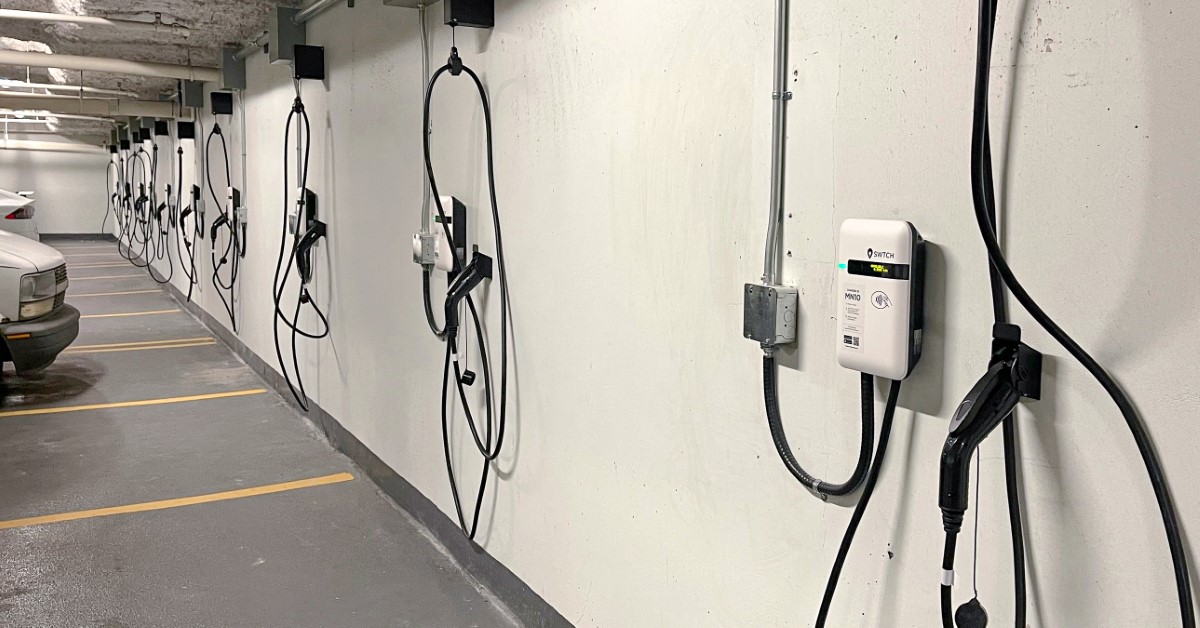
See how SWTCH makes multifamily EV charging simple and affordable.
Key Considerations for Multifamily EV Charging
If you’re looking to install EV charging infrastructure on a multifamily property, there are a number of things you’ll need to think through in order to set yourself up for success—and avoid potentially unpleasant surprises.
EV charging grants, incentive programs, and tax credits
At the federal and state or provincial levels—and even sometimes local—there are some great incentive programs out there that can help reduce the cost of installing EV chargers at your property. In some areas, these programs can reduce the cost by up to 90%.
Different programs have different requirements. For example, the US Alternative Fuel Vehicle Refueling Property Tax Credit (also known as 30C) offers up to $100,000 in tax credits per item of property when installing EV charging stations. For full eligibility, it also requires that charging stations be installed in underserved areas and that specific wage and apprenticeship standards be adhered to.
You can learn more about some of the available incentive programs right here. If you’re unsure of what is available in your area and would appreciate some guidance, you should also feel free to reach out to our team. We’ll be happy to help.
Electrical capacity & load management
Especially when you’re retrofitting an older building, electrical capacity is a common challenge for multifamily installations. A typical EV charging station installation requires a 40 amp circuit for each charger. For most buildings, this means choosing between either not installing enough chargers to offer good service to residents or spending a fortune on electrical upgrades so that enough chargers can be added.
Beyond that, there are concerns about the load that several chargers in concurrent use could place on the building. Already, there are likely to be many appliances, heating and cooling systems, and other demand sources in use—electric vehicle charging on top of all of that could push the building past the threshold at which you’ll have to pay demand charges.
The solution: The better EV charging solutions for multifamily buildings will offer “load management” functionality, which can accomplish two main things:
- It can help you install multiple chargers along a single circuit, which reduces the amount of upgrades you have to make (if any).
- It can interface with your other demand sources to ensure that charging takes place only at the times of day or night that will not push your building’s demand up too high.
You can read more about load management technology here.
Or watch this quick explainer video.
Shared vs Unit-owned (or Private) chargers
Generally, there are two models for installing chargers at a multifamily building:
- Shared chargers, where there are designated spots for EV charging as part of the general parking lot for the building. Any resident (or possibly visitor) who needs to charge up will park in the designated spot when they need to charge. hey’ll need to move their car when charging is complete so that another resident can plug their own car in if needed.
- Private or unit-owned chargers, where chargers are installed in designated parking spaces for exclusive use by the residents or guests of specific units (typically found in condominiums where units are owned).
There are pros and cons to both models.
Generally, shared chargers will represent a lower installation cost per user, but they can also experience a greater need for maintenance and do not always offer the very best user experience.
Private or unit-specific chargers tend to be more expensive to install per user, but the experience is generally better, and they tend not to require as much maintenance. In this situation, often the cost to install the chargers and some or all of the installation is passed to the unit owner.
How many chargers to install
One of the trickier questions facing property owners is that of how many chargers to install.
Too many and you run the risk of overspending on an amenity that gets little use. Too few and you run the risk of frustrating your tenants with a new amenity that doesn’t really meet their needs.
To cap it off, there’s also the reality that the number of chargers you’ll need in just a couple of years will surely be higher than the number you need today.
You can read some more detailed advice on how to proceed in this Q&A article, but the best step, in general, is to conduct a survey of your tenants to understand how many own EVs today and how many intend to purchase one in the next few years.
With this data, you’ll have a better sense of what you definitely need today and what will represent reasonable future-proofing for near-term future needs.
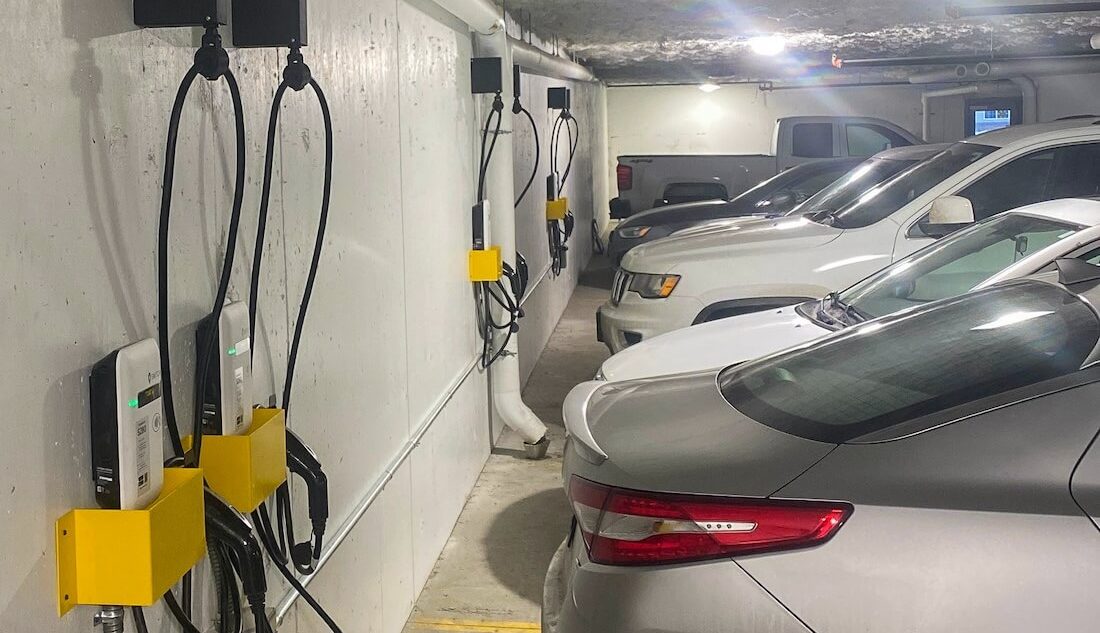
How to handle billing and payments for multifamily EV charging
One of the most important things to get right when rolling out your chargers is the pricing and billing.
The reality of EV charging is that most drivers will not accept a huge markup on the electricity they consume when charging their cars. As such, it’s best not to get too aggressive in your pricing strategy.
Generally, we recommend that if you are going to charge your tenants a fee to charge their vehicles, it’s recommended that you charge an amount equal to the cost of the electricity (and any associated fees or taxes) plus an additional top-up if you want to recoup some of the costs of installing the chargers. The right amount will depend on a bunch of factors, including how quickly you want to recoup the costs, what your total costs were, what energy costs in your region, etc. A good rule of thumb, though, is to make the top-up fee something close to $0.25/hour, or the equivalent if you are charging by electricity consumed.
As to specific ways to charge drivers, here are the two most common payment models that multifamily charging employs:
- Pay by time: With this model, individual drivers pay based on the length of the charging session. It’s an easy enough system to implement, but depending on how consistent energy delivery is via your chargers (for example, load management technology can mean slower charging in some cases), it may mean drivers pay a higher price relative to the electricity they consume.
- Pay by energy: With this model, drivers pay based on the electricity they consume over the course of a charging session. This is probably the most fair way to bill for EV charging, as multiple factors outside of a tenant’s control can impact the rate of delivery of electricity to a vehicle.
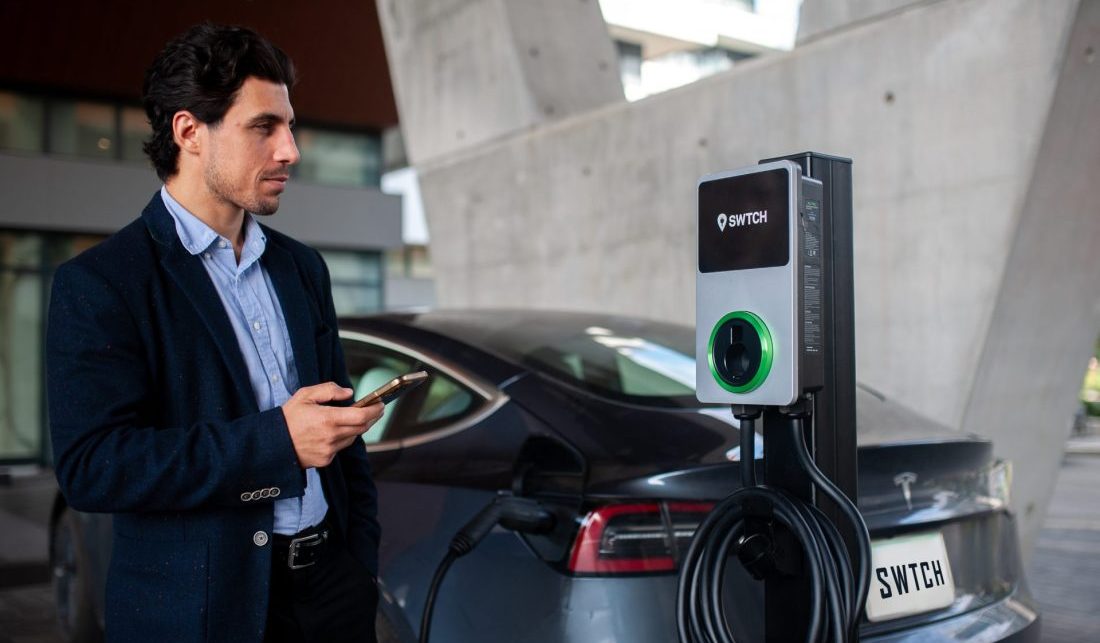
The basics of a good multifamily EV charging solution
Even with incentives and the ability to earn back the cost spent on EV chargers, completing an installation project is an expensive and time-consuming process. For that reason, it’s important to plan carefully so that you pick the right hardware and software for long-term success.
Though specific needs vary by property, there are three general qualities that are best for every multifamily EV charging project.
The platform (hardware and software) is open
EV chargers can either be a part of a closed platform or an open platform.
When a charger is part of a closed platform, it means that the hardware and software are intertwined, usually created and maintained by the same company, and generally quite locked down.
If, down the line, you decide that you don’t like the terms of your agreement, the capabilities of the software, or the reliability of the hardware, you’ll have to make a difficult choice. You can either rip out all the chargers and start over with a different setup, or you can grit your teeth and keep using the chargers as they are, flaws and all.
Open platforms, on the other hand, offer a great deal of flexibility. You can use a range of charger hardware and software together that you like, provided they are compatible with each other. The industry standard protocol for interoperability is called the “Open Charge Point Protocol,” or OCPP. By selecting hardware and software that adhere to this protocol, you’ll make it incredibly easy to add or replace chargers or switch software providers.
Especially given that multifamily EV charging is a relatively new space, it’s advisable to pick an open platform today. You’ll be able to modify your network as needed over the years as your needs change and the space develops further.
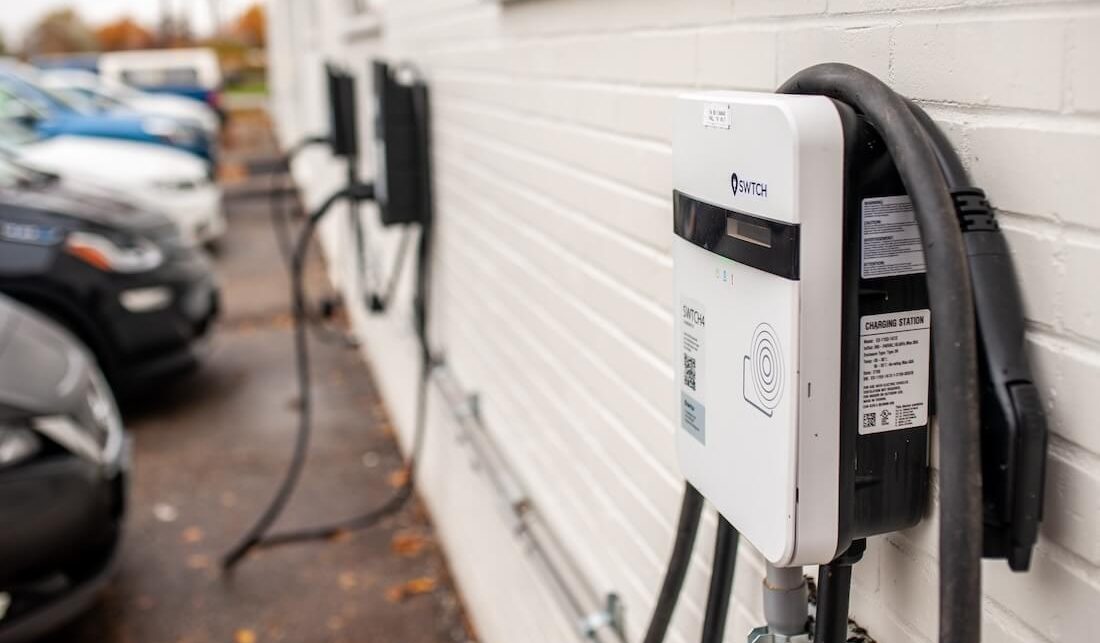
Your chargers are networked and connected to the internet
“Networked chargers” are EV chargers that are connected to each other and the internet. This kind of platform is more capable and can help you monitor usage and downtime live and take proactive steps to ensure your chargers are delivering on what they promise.
Unconnected chargers do not provide this kind of access and make it far more difficult to understand the current state of your network. Often, you’ll only learn about issues when a driver takes the time to contact your support team to complain about one of your chargers being out.
There are different kinds of connectivity options that are possible, depending on what your location is like. Wired connections, WiFi connections, and cellular connections are all options to keep your chargers connected to your central management system.
The charging system can expand easily
We’re still in the relatively early stages for EV adoption. Even just a couple of years from now, a substantially higher number of drivers will be in electric cars and in need of chargers.
There’s a good chance that whatever number of chargers you install at a building today, there will be a demand for more in the next few years.
One of the most important things to have in place if you want to have a charging system that can expand easily is electrical infrastructure that is built to accommodate this expansion. This will mean ensuring there’s additional capacity in the panel or panels, sufficient wiring, and, ideally, pre-planned space and conduits for adding additional circuits and chargers. Taking care to plan ahead and ensure your electrical infrastructure is well-planned to accommodate future demand and projects can save a lot of time and money in the future.
Beyond this, you will need to choose a software solution that scales well will help you keep up with demand more easily. This generally means two things:
- Selecting software that makes it easy, from an administrative perspective, to manage all the different chargers you have.
- Selecting an EV charging provider with load management capabilities so that you can install more chargers without needing the same level of expensive electrical upgrades.
Even if you have no intention of installing more EV chargers over the next few years, pick a solution that makes it easy to add more chargers as needed. You’ll thank yourself years from now when it finally is time to install more.
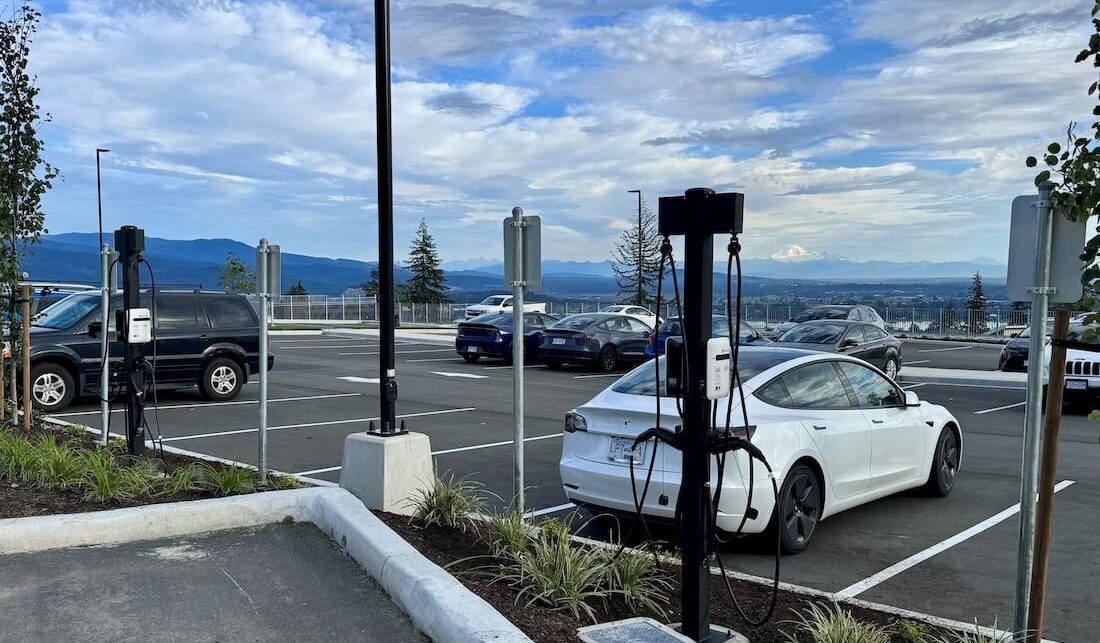
Selecting the right hardware for your EV chargers
There are three main kinds of EV chargers:
- Level 1: The slowest kind of charger, equivalent to plugging a car into a regular wall outlet. The expectation for this kind of charger is that it will take somewhere between 2 and 5 days to charge a car—far too slow for most drivers to find satisfactory.
- Level 2: The standard for at-home charging, this kind of charger can typically fully charge a car in 5-10 hours. Typical usage for this kind of charger sees a driver arrive home after work, plug in, and be ready when they leave again the next morning.
- Level 3/DCFC: Typically called a “fast charger,” these chargers typically charge up a car in under an hour. They’re enormously expensive, though, and place heavy demand on the electrical system.
Almost always, the best choice to make for a multifamily property is to install Level 2 chargers. This allows multiple drivers to plug in at the same time and won’t place as much strain on your system as installing a single DCFC charger, which would most likely require a substantial upgrade to your electrical infrastructure as it requires substantially more power. Installing DCFC chargers is also much more expensive than multiple level 2 chargers.
Selecting the right EV charging software
Because your selection of software impacts both your team and the drivers who use your chargers, there are quite a few features to look out for to ensure you create the best possible experience for everyone.
Features for managing your chargers
Management features within your EV charging software are going to make it easier for your team to stay on top of charger status, see real-time usage data, and make any changes you like to ensure you maintain a good user experience.
Some of the features you should ensure your solution has:
- User access controls so that you can easily add or remove authorized tenants
- Payment and billing controls so that you can change monetization strategy, adjust payment rates, and review session and billing history when needed
- Live status updates so that you can see when chargers are in use or are in need of inspection because of a suspected malfunction
- Load management to ensure your connected chargers share available electrical capacity well, both with themselves and with the building’s other systems
- Reporting and analytics so that you can review usage history, energy consumption, revenue generated, etc.
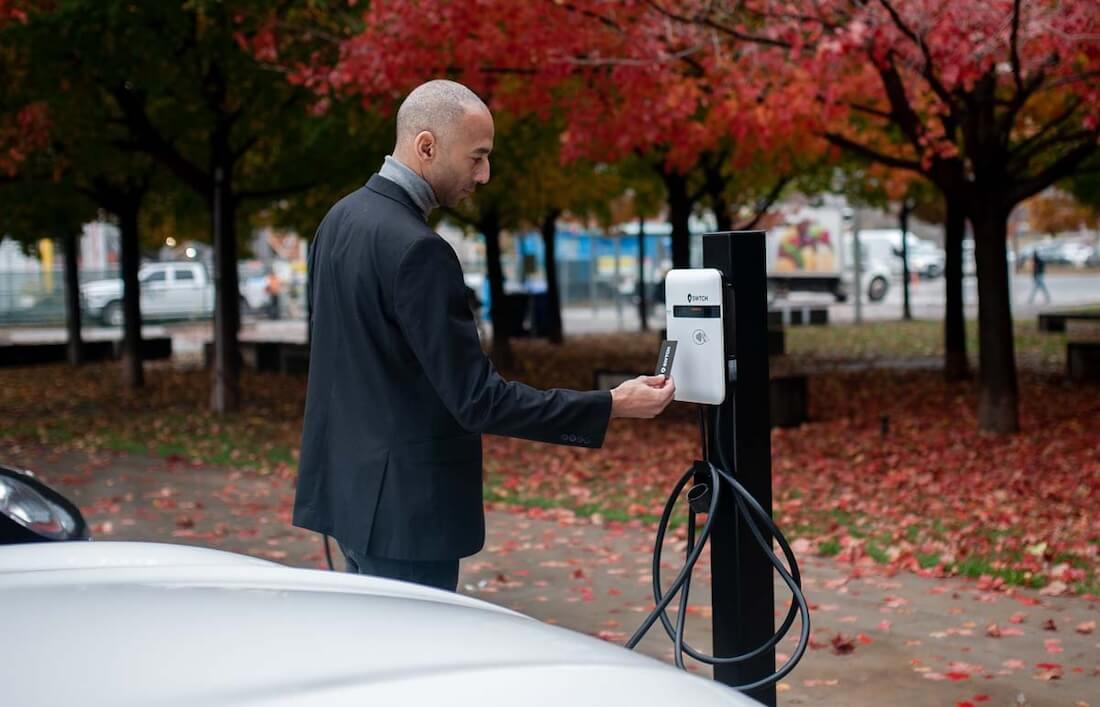
Features for a good user experience
Generally, users won’t interact directly with the same application you use to manage your network. Instead, they’ll likely make use of either a smartphone app or a web portal to manage their access to your chargers, with the data from that solution syncing up with your backend systems.
Some of the features users expect include:
- Charger availability info to understand when any chargers listed in the app are available to be used
- Payment management so that they can add or remove payment methods for their charging sessions.
- Session initialization so that they can trigger a new charging session
- Session history so that they can review past charging sessions
- Support so that they can quickly reach out to a help desk in the event of an issue when trying to charge their vehicle
Not all charging software will include this kind of user-facing app, but it really is an important piece of the puzzle when trying to ensure that drivers always have access to the information they need. It’s well worth specifically hunting for a platform that offers this for your tenants to use.
Best practices for successful implementation of multifamily charging
The most successful implementations of multifamily EV charging projects don’t just involve sticking chargers in the ground and calling it a day. There are a number of additional steps that can make a world of difference in helping your tenants understand and use the new chargers in your building, in helping your own team manage the chargers and any work associated with getting them installed, and ensuring that your charging infrastructure remains in peak condition well into the future.
Here are a few of the most important steps to take.
Choose a contractor who has EV charging experience
Many electricians will claim to be able to do the job of installing EV charging stations at multifamily properties, but the reality is that experience matters quite a bit.
Inexperienced installers may make costly errors in completing the basic installation, and they’re also likely to be less capable of designing a system that will be able to grow and adapt as your needs change.
An experienced partner will know what works best for your building today and will have a good sense of how you can prepare yourself for future expansion. It’s worth a potentially higher price to make sure this project is planned and executed with an eye on long-term success.
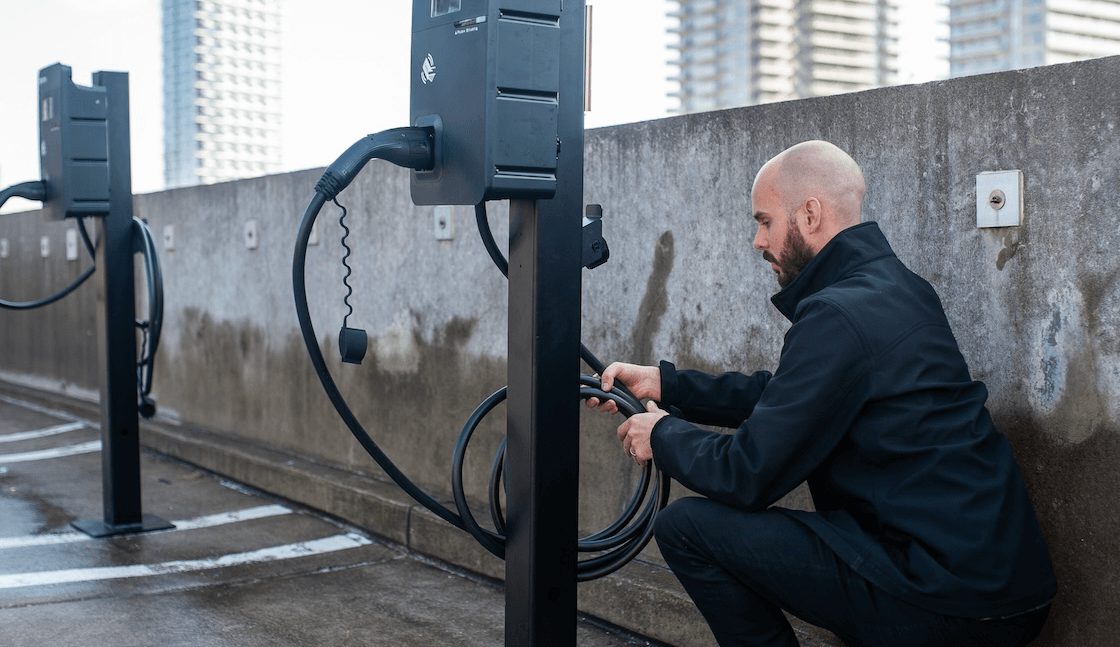
Run a resident education program
Taking a little time to educate your residents will surely pay off in the long run, and it’s not something that has to be especially complicated.
Whether with an in-person info session, a recorded video, or even just an email, explain to your tenants—both those who currently own an EV and those who do not—how to access the chargers, any policies in place about moving charged vehicles (when using shared chargers), how to download and use any related app, how to request an RFID payment card, etc.
Evaluate solutions providers as partners, not just vendors
One of the problems in the EV charging space today is that, too often, vendors seem delightful to work with, but then aren’t reachable when something goes wrong and the property owner needs help.
To avoid getting into this situation, it’s worth your while to evaluate potential hardware or software providers for their potential as long-term partners in your projects.
How accessible will they be when something goes wrong? How easily can you get in touch with them if you need a quick answer? How proactive are they about checking in with you to ensure you’re satisfied with your charging setup?
Ask them the questions yourself, but also look to online reviews and customer testimonials to go a level deeper. Whoever you decide to work with, you want to be sure that they’re legitimately helpful and there to help you succeed for the long haul.

Start planning for the future immediately
We’ve mentioned this a couple of times already in this article, but it bears repeating: your property’s EV charging needs are likely to be substantially different in the future than whatever they are today.
For that reason, it’s a good idea to spend a little time at the outset to figure out what you might be able to do now to make your life easier in the future.
One example: Even if you don’t need a ton of chargers today, you might find it beneficial—either because of available grants or just because it’s cheaper to do everything in one shot—to complete more extensive electrical upgrades now, with an eye on eventually using them to accommodate more chargers in the future.
Another example: You might want to install chargers (with compatible software) that can handle bidirectional charging today, even if very few EVs support this tech right now. Someday, it might prove to be a powerful tool for managing peak electricity consumption or for participating in utility or state energy programs.
Planning years out is hard, but electric vehicle drivers aren’t going to stop wanting to charge up at home anytime soon, so expect the demand to go up, if nothing else. The more you can do today to set your property up for the future, the better.
Want to take the next step in rolling out EV charging at your multifamily property?
Get in touch with our team! We’re here to help.
